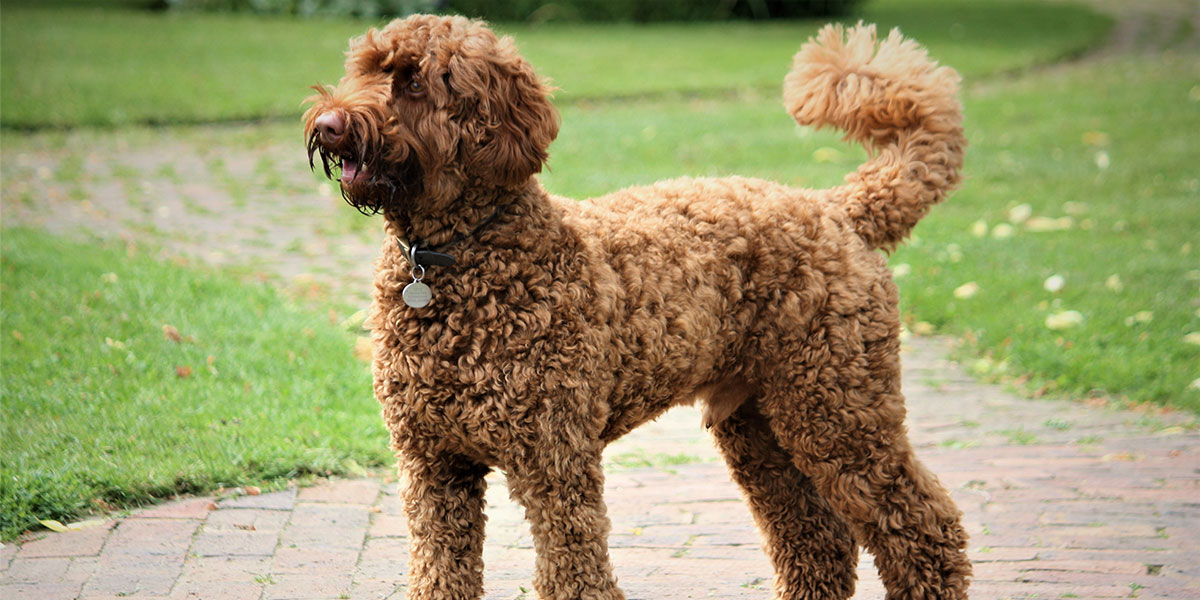Taking too long? Close loading screen.

May 1st
Labradoodles can bring a lot of joy to your life. But one thing that you may not enjoy is clipping their nails. The nail trimming process can be a headache for both you and your puppy. Many attempted clipping sessions end in tears- and not just for your puppy.
But nail clipping is a crucial part of any Labradoodle’s grooming routine. How can you keep their nails healthy, without the frustration?
You may be surprised how easy it can be to clip your Labradoodle’s nails. You just need to have the right equipment, and always take the proper steps when trimming.
Here, we’ll guide you through how you can clip your Labradoodle’s nails without all of the crying and the yelping. Your dog may never love it, but you can make them tolerate nail trimming.
Nail clipping is like an expedition: you always need to make sure you have the right tools. So before you bring your dog in for their nail clipping, make sure you have all of the equipment you’ll need for the job.
Here’s a list of what you’ll need to get started:
These will be your bread and butter. That’s why it’s important that you invest in a decent pair. And make sure you get one that’s appropriate for the size of your Labradoodle’s nails. And no, you should not use your own nail clippers!
Even the most careful dog owner will eventually cause a minor bleed. That’s why you should have styptic powder or pads on hand. These can help staunch the bleeding quickly.
This can help you smooth your dog’s nails
We all know the power of treats. That’s why you should make sure you have plenty on hand whenever you clip your Labradoodle’s nails. Try to use smaller treats that are easier for them to chew, so that they don’t move their paws around too much.
Once you’re all geared up, you’re going to want to set up in the right place. Since Labradoodle’s are of a manageable size, you can consider putting them on a counter or another raised surface, making it easier for you to reach their nails.
And make sure you have plenty of light! The most common cause of bleeds is that dog owners cannot see their dog’s nails, and cut off too much. Maybe consider having another person hold a light on the area as well. This person can also help reassure the dog and keep them from moving.
Now that you’ve got your Labradoodle set up in the perfect place, it’s time to bring out the nail clipper. The key to good trimming is to make as many small cuts as possible. Why? Because this makes it easier to maintain the shape of the nail. And it keeps you from cutting too deep and causing a bleed.
Always trim at a 45 degree angle, so that your Labradoodle’s nails have a nice, curved shape to them. Once you see a black dot appear in the center of your dog’s nail, stop. This is the quick- the area of the nail that carries the blood supply and that is packed with nerves. If you cut into the quick, your dog will be in for a painful surprise.
Cracked nails will happen, especially if your Labradoodle has longer nails. That’s why you should have a nail file on hand. Gently file from the base of the nail to the tip in a repeated motion. This will help smooth the surface of the nail.
Once you begin trimming your dog’s nails, don’t be in a rush to finish. Many dog owners try to get through the process as quickly as possible, figuring that this is the best way to minimize anxiety for their dogs. But by rushing, you increase the chances of a bleed, which will make it even harder to trim your dog’s nails the next time.
That’s why you should work slowly and take plenty of breaks. Depending on your dog’s sensitivity, consider doing only one paw at a time. Give your dog a treat between paws, and maybe even allow them to run around for a bit. Some dog owners even choose to do just one paw per day!
No matter how careful you are as you trim, you’re going to eventually cause a bleed. That’s because the quick is often found in different areas, meaning that it’s easy to accidentally cut.
If you do cause a bleed, don’t panic. Most will be fairly minor and heal quickly. Just make sure that you have some styptic powder on hand to staunch the bleeding and keep your Labradoodle from making a mess as they run around the house.
And like we said earlier, take your time. It can take many trimming sessions before your Labradoodle is comfortable with the process. Work slowly, and reward good behavior with treats. And don’t let your Labradoodle try to mouth or bite you. If you allow this behavior when they are young, it can be hard to make them stop when they’re older.
If you are having serious issues with clipping your Labradoodle’s nails, you can also consider calling a professional groomer. This may seem like quite an expense, but it can save you some serious pain, and also help your Labradoodle get used to the grooming process.
Still don’t have the perfect Labradoodle puppy? Visit our puppy finder page to find your Labradoodle companion.
Find the Perfect Puppy